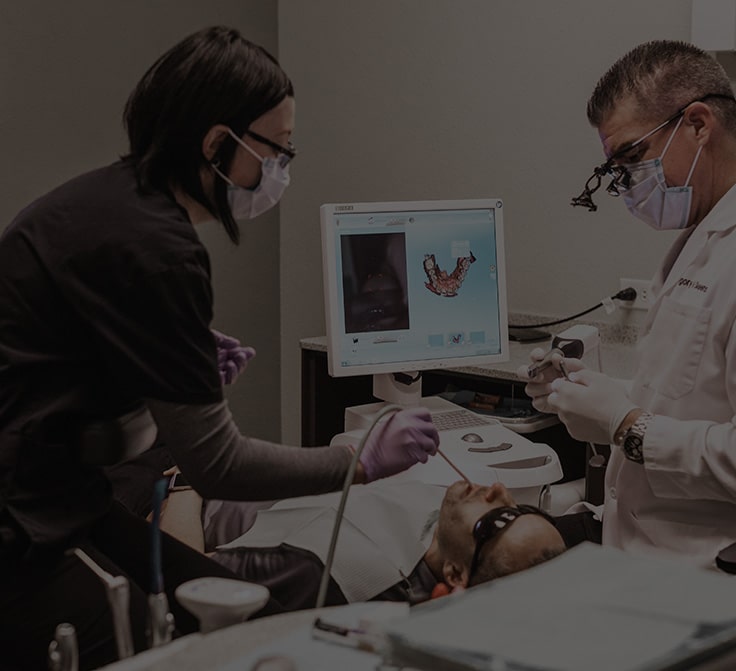
What Does an Orthodontist Do?
Encinitas Family Dentistry, Orthodontists are experts in the art and science of diagnosing, preventing, and treating dental irregularities. Unlike dentists that treat problems like cavities and gum disease, orthodontists help children, teenagers, and adults fix teeth than are crooked, crowded, too far apart, or misaligned.
In order to recommend the best customized treatment for each patient, orthodontists must become experts in proper tooth movements and the guidance of dental, jaw, and facial development. The treatments that orthodontists recommend are meant to move teeth into a healthy and attractive alignment.
4 Important Signs Your Child Needs to See an Orthodontist
You may start to notice that your child’s teeth aren’t growing in perfectly. Perhaps her bottom teeth are pushed too close together, or maybe her front teeth jut too far forward. Some problems resolve themselves over time, but others require the help and attention of an orthodontist.
If you notice any of the following four issues developing in your child’s mouth, schedule an appointment with your local orthodontist. The work that orthodontists perform do more than improve the appearance of your child’s mouth; orthodontic treatments also prevent long-term wear and trauma of the teeth, keep the gums healthy, and improve speech and chewing abilities.
Underbite or Overbite
Your bite defines the way that your teeth fit together when you close your mouth. In a perfect bite, your upper teeth fit slightly over your lower teeth. When you close your bite, about one-half or two-thirds of the length of your bottom teeth should be seen and your molars should fit into the groves of the molars opposite. This ideal bite protects your tongue, lips, and cheeks.
However, most of us don’t have a perfect bite naturally. Dental issues, thumb sucking or pacifier use as a child, and jaw problems can all cause malocclusion, or bite misalignment. Depending on the arrangement of your child’s teeth, she could have malocclusion categorized as an underbite or an overbite.
An overbite occurs when the upper jaw and teeth overlap with the lower jaw and teeth. An underbite occurs when the lower jaw and teeth overlap with the upper jaw and upper teeth. Malocclusion creates speech problems, teeth grinding, and even difficulty breathing, so it’s important to seek orthodontic treatment for your child as soon as you notice signs of any bite abnormalities.
Widely Spaced Teeth
You might also notice that your child’s adult teeth are spaced too far away from each other. This is usually caused by small teeth, missing teeth, or an unusually wide dental arch. Improper spacing gives teeth the opportunity to shift into different positions, which creates additional orthodontic issues.
Protrusions
Protrusions are fairly easy to notice when the front teeth stick out too far and create an unusual appearance. This problem is also known as having “buck teeth. Some protrusions occur if the upper jaw is too far forward, the lower jaw is too far back, or the teeth grow in at an angle. Unfortunately, untreated protrusions make it difficult to close the mouth and lips, eventually causing dry oral tissue, tooth decay, and speech problems.
Crowding
Crowding is another very common orthodontic issue. When the teeth don’t have enough space to properly spread out and sit in their correct positions, overlapping and rotations develop. The teeth become crooked and staggered, making it difficult or impossible to remove plaque and bacteria from small spaces and nooks. Cavities and gum disease may develop if left untreated.
The Most Common Orthodontic Procedures
There are a few different procedures that orthodontists recommend to resolve issues like protrusions, crowding, poor spacing, and incorrect bite.
Spacers
Spacers are small elastic or metal devices that are placed between the back teeth to gently create more space between crowded teeth. Spacers, also known as separators, can cause a bit of pain and soreness as they gentle force the teeth to move apart, but a mild pain reliever like ibuprofen or acetaminophen can minimize discomfort. Once the spacers have done their job, they are removed and replaced with orthodontic bands.
Braces
Nobody can forget about braces. They are the most widely recognized orthodontic device used by more than four million people in America.
Traditional braces use a series of brackets that are directly attached to the teeth and linked by thin wires. The wires are gradually adjusted to pull the teeth into better alignment. The standard braces procedure takes a few years to deliver results.
Some teenagers and adults choose to use Invisalign instead of standard braces. Invisalign can straighten your smile using clear plastic aligner trays instead of metal brackets and wires. It’s a relatively comfortable and invisible treatment option that gently shifts the teeth into their proper places.
Retainers
Finally, retainers are often used before and after braces to prepare the teeth for better alignment and maintain the progress made by braces. There are many different types of retainer appliances, so your child’s orthodontist will recommend the right variation:
Hawley retainers are made of bendable wire and plastic or acrylic. A front wire stretches across the front teeth, with two brackets on each side fitting over the molars for a secure fit. The center of the retainer is made of acrylic molded to fit precisely on the roof of your child’s mouth. Since they can be designed in any color or pattern, children enjoy customizing these retainers. Overall, Hawley retainers are adjustable, easy to clean, and long-lasting.
An Essix retainer is made of molded clear plastic, much like an Invisalign aligner. Teenagers and adults often prefer this type of retainer since it’s less noticeable and easy to remove.
A permanent bonded retainer is glued to the back of your six lower front teeth to maintain the alignment established by braces. Some permanent bonded retainers can be removed after a few years, but others are left in place forever. They do a great job of keeping teeth in line, but these retainers are difficult to floss and may affect speech since they obstruct the path of the tongue.
Retainers can only do their job with regular daily use for a specific length of time. If your child fails to wear his retainer as often as required, the teeth will revert to incorrect positions.
Get the Advice of an Experienced Orthodontist Today
Dr. Gregory Skeens and his team at Encinitas Family Dentistry California specializes in orthodontics for children of all ages. Whether your teenager needs braces or your younger child won’t stop sucking her thumb, Dr. Skeens has the expertise needed to help and are devoted to enhancing your naturally beautiful smiling using state-of-the-art technology.
Call (760) 944-9288 to Make an Appointment with Dr. Skeens and learn more about the orthodontic care your child needs to achieve a straight, healthy smile.







 LEARN MORE ABOUT OUR GUIDING PRINCIPLES AT ENCINITAS FAMILY DENTISTRY
At our core, Encinitas Dentistry is a dental practice devoted to restoring and enhancing the natural beauty of your smile. How we accomplish that goal is what makes us stand out. We mingle time-tested approaches to oral care with state-of-the-art technology and procedures to deliver beautiful, long-lasting smiles!
LEARN MORE ABOUT OUR GUIDING PRINCIPLES AT ENCINITAS FAMILY DENTISTRY
At our core, Encinitas Dentistry is a dental practice devoted to restoring and enhancing the natural beauty of your smile. How we accomplish that goal is what makes us stand out. We mingle time-tested approaches to oral care with state-of-the-art technology and procedures to deliver beautiful, long-lasting smiles!